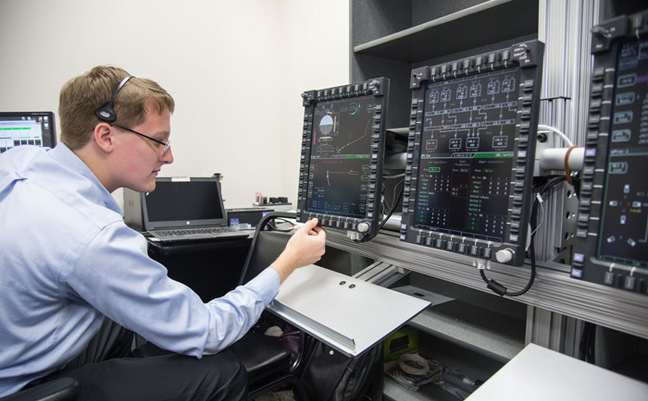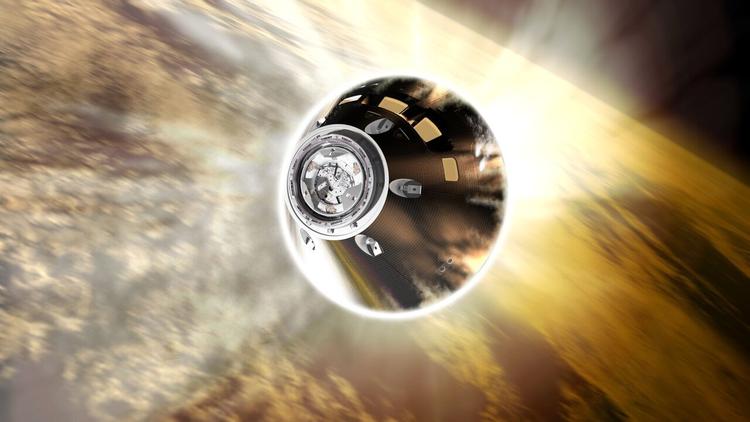NASA has been putting its Orion Capsule “crew display and control system” through its paces – a lean three-screen set-up designed as a user-friendly alternative to the “nearly 2,000 switches and controls” packed into the space shuttle.

An engineer eyes Orion’s lean crew display. Credit: NASA
The testing at Johnson Space Center formed part of a joint simulation involving “two astronauts and several flight controllers, including a flight director, capsule communicator or CAPCOM to communicate with the crew, and controllers who manage electrical power subsystems and environmental control and life support elements”.
NASA explains: “Together they worked through a failure scenario in which part of Orion’s power system failed. This scenario required troubleshooting to get pumps and other systems back up and running to support the systems the crew needs to survive.”
Ultimately, the capsule’s display and control system, plus “advanced software and operational concepts” will “aid the crew on long missions far from Earth, where astronauts will be required to work more independently than on missions in low-Earth orbit”.
The one long mission everyone is looking forward to is getting boots on Mars, but NASA’s still some way off that historic moment.
An unmanned Orion is set to launch atop the Space Launch System (SLS) in 2018, on Exploration Mission-1 (EM-1). The spacecraft is destined for “a stable orbit beyond the moon to demonstrate the integrated system performance of Orion and the SLS rocket prior to the first crewed flight”.
One crewless Orion has already been aloft, performing a “flawless flight test” last December when it soared to to 3,604 miles (5,800 km) above the Earth, before returning for a gentle splashdown in the Pacific. On that occasion, it was carried heavenwards by a United Launch Alliance Delta IV Heavy rocket.
The EM-1 capsule – or at least the pressure vessel part of it – recently rolled up at the Kennedy Space Center, where it’ll be transformed into “a fully operational spacecraft”, as Orion production manager Scott Wilson put it.

